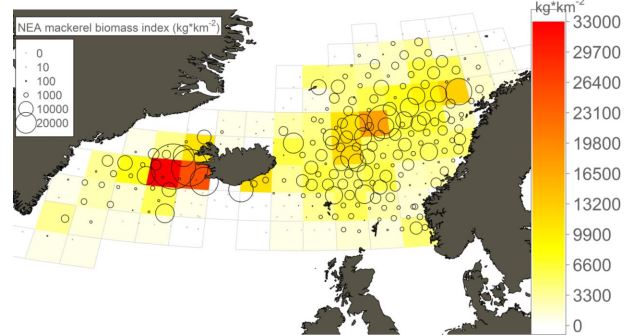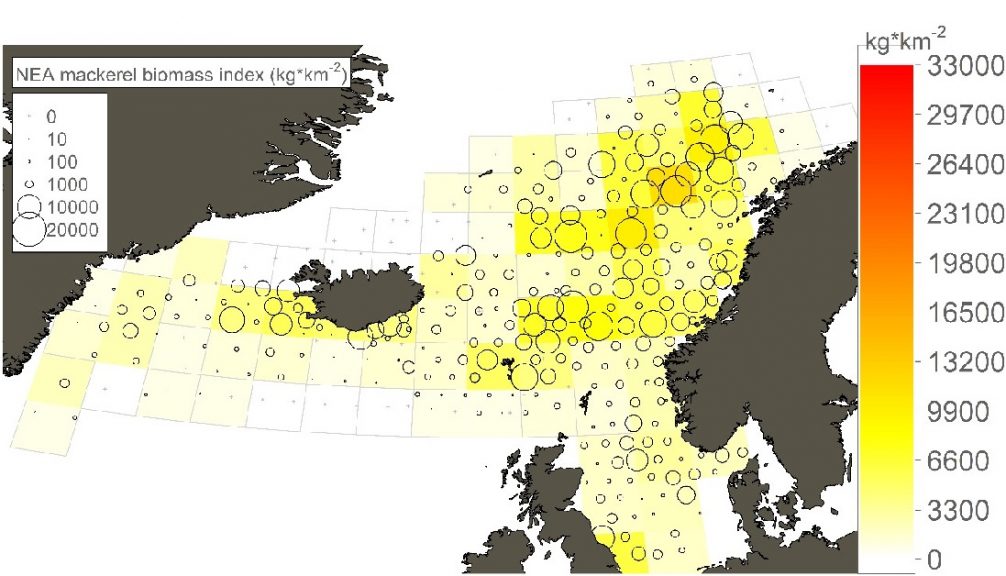Significantly fewer mackerels – especially in Greenlandic and Icelandic waters Published 04.09.2018

Yesterday, the results of this summer’s mackerel surveys were published by the International Council for the Exploration of the Sea (ICES). Significantly fewer mackerels were observed compared to 2017, especially in north-western areas near Greenland and Iceland (Figure 1 and Figure 2 in the right column). The water temperature in these areas was lower in 2017, in spring as well as summer.
Based on ICES’ calculations, a decline in the stock size was expected, because the total of international catches in 2017/2018, once again, were not sustainable. However, the surveys of the Greenland Institute of Natural Resources suggest that the decline is larger than expected. Unlike in 2017, the surveys found no Norwegian spring spawning herrings in the area, where the Greenlandic fleet usually catches them.
The mackerel mainly overwinters and spawns west of the British Islands and visits the Nordic waters, including Greenland, in the summer months to eat plankton. This spring was cold, which probably affected the mackerel’s north-western migration.

Figure 1. Mackerel catches (kilograms per trawled km2 in the surface (0-30 m)) in 2017. The circles show catches of mackerel, and the coloured squares show the distribution of biomass.
Despite the smaller stock size, the commercial fishery in East Greenland has maintained high catch rates in 2018. This may be due to an increased efficiency in the Greenlandic fleet.
This years’ Greenlandic surveys of pelagic fish and plankton were coordinated with similar surveys in Norway, the Faroe Islands, Iceland and the North Sea. The survey of mackerel will be part of the international assessment of the total stock, which is spread throughout the entire North-East Atlantic Ocean. In the long term, the biological surveys are expected to provide fishers with an early clue about seasonal fishing opportunities.
During the past week, biologists from the involved countries have processed the many expedition results and have just presented them in Tórshavn at a scientific working group meeting at ICES. The report can be found on the Institute’s website. The Institute is represented in the core of the group of scientists, who will make the calculations later this week. However, the final quota advice from ICES for 2019 will be published in the beginning of October.

Figure 2. Mackerel catches (kilograms per trawled km2 in the surface (0-30 m)) in 2018. The circles show catches of mackerel, and the coloured squares show the distribution of biomass.
For more information, please contact:
Senior researcher at Department of Fish and Shellfish Teunis Jansen on phone +45 21314997 or email: teja@natur.gl.

